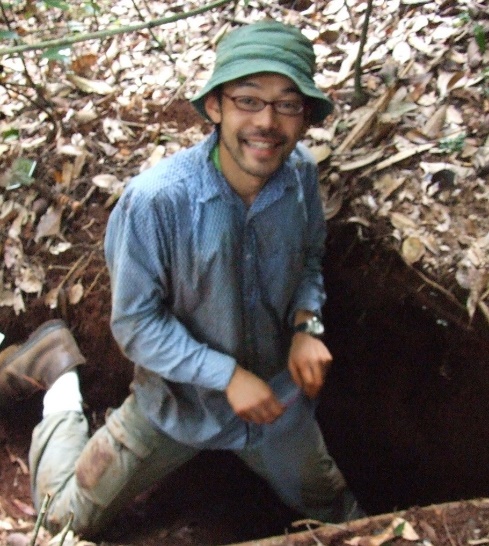THE P.M. HUANG PRIZE 2019 IS AWARDED TO DR. ROTA WAGAI FOR HIS OUTSTANDING AND UNIQUE CONTRIBUTIONS TO OUR UNDERSTANDING OF THE INTERACTION OF ORGANIC MATTER (OM), MINERALS, AND MICROORGANISMS IN THE SOIL.

One of the best examples of the excellence of his work is the examination of the debated relationship between decomposition temperature sensitivity (Q10) and substrate quality, by distinguishing microbially-accessible, mineral-unprotected OM via density fractionation. While previous studies used indirect indices of substrate quality, he directly assessed the structure of accessible OM (low-density fraction) by solid-state 13C NMR spectroscopy. Together with the changes in soluble C pools and microbial biomass at different temperatures, he and colleagues successfully showed how decomposition Q10 was linked with soil C accessibility, molecular structure, and microbial physiology.
Whereas his earlier studies focused on soil respiration and on water-soluble organic C as the substrate for soil microbial respiration, he expanded his research to soil OM stabilization with a focus on mineral-organic matter interactions. He developed a new technique which allowed the quantitative assessment of the OM stabilized by iron (oxy)hydroxides and by other reactive inorganic phases such as less-crystalline aluminosilicates. His pioneering approach is now increasingly used in soil and sedimentary systems, and has clearly stimulated research into OM-metal interactions.
More recently, he has emphasized finding a functional linkage between physical structure and OM stabilization in soil at micro scale. While previous studies rejected the applicability of aggregate hierarchy concept to Andisols, his group clearly showed hierarchical structure in an Andisol and identified submicron-sized, organo-metal/mineral composite as a key aggregation agent. This work received the “Best Original Paper” award in the journal Geoderma”, and proposed a new concept to bridge the gap between micro-scale interaction of OM and minerals (e.g., sorption) and larger-scale aggregation process. His group has been advancing this concept with new data since then, using several ambitious approaches (e.g., the use of carbon and nitrogen isotopes and synchrotron X-ray based techniques such as STXM and micro CT).